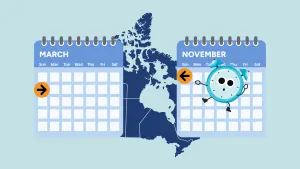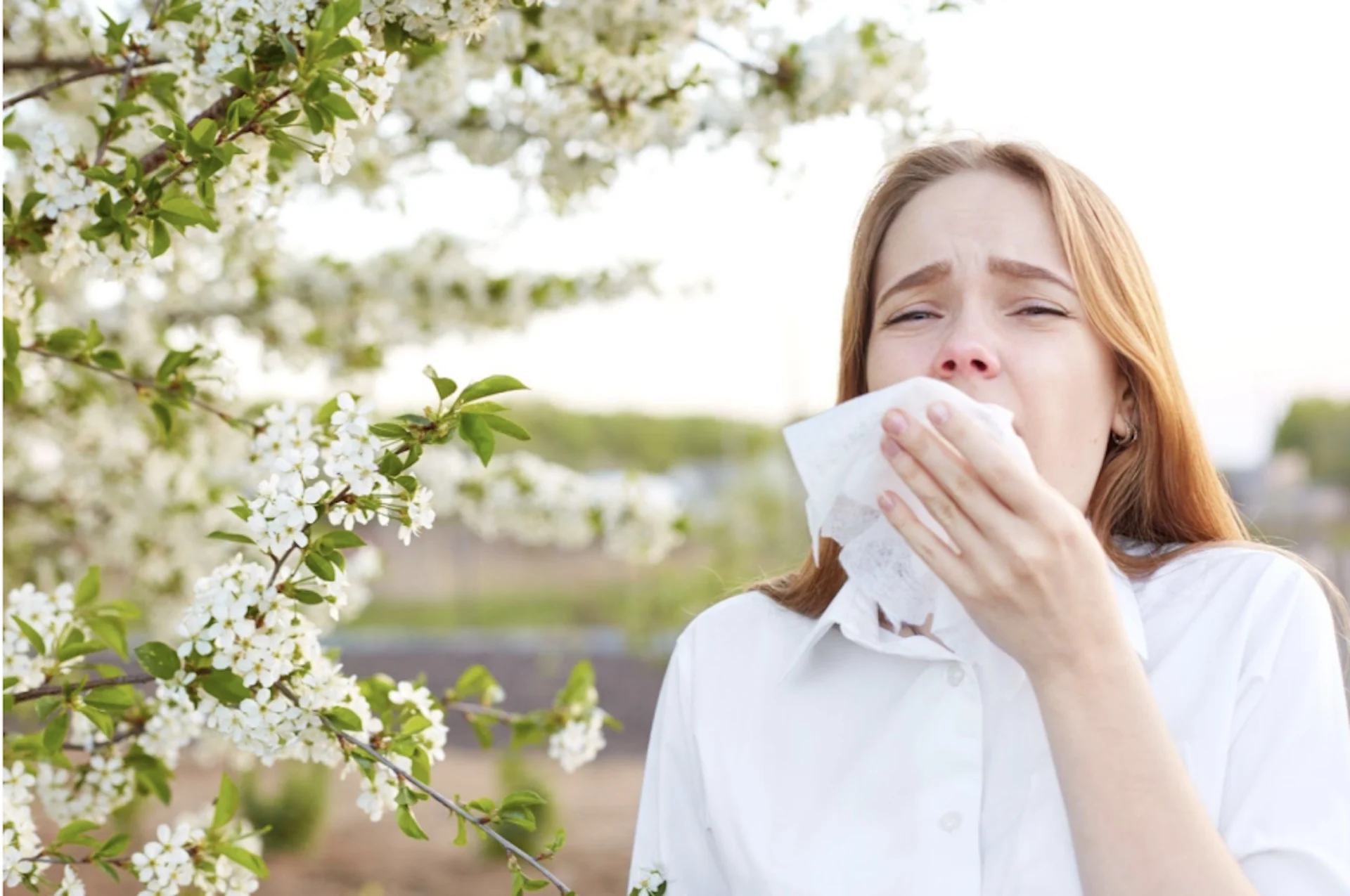
Sluggish start to allergy season in Canada, but it will catch up
This year's allergy forecast has a little bit of good and bad news for Canadian sufferers, depending on where they are in the country
While spring brings pleasantries such as warmer temperatures, plants and wildlife, it can also yield insufferable allergies for millions of Canadians.
According to Aerobiology Research Laboratories, the pollen forecast provider for The Weather Network, up to 9 million Canadians, and as many as 1 million dogs, live with seasonal allergies.
DON'T MISS: Pollen season looms! Here are some cities with the highest concentrations
Those hoping for a tranquil allergy season this year may not be in luck.
The good news is that the forecast called for a somewhat-delayed start, which usually happens around mid-March for most of Canada, thanks to the amount of snow accumulated during the winter and cooler weather this spring already, according to Daniel Coates, director of marketing and business development at Aerobiology Research Laboratories.
Once it "balances out and becomes more of a regular season" across Canada, some parts of the country could see less pollen than usual, he added.
"Less pollen is basically based on a lot of different variables, but one [of the] bigger ones is the weather," said Coates, in a recent interview with Rachel Schoutsen, weather presenter, sponsorship host and content creator at The Weather Network.
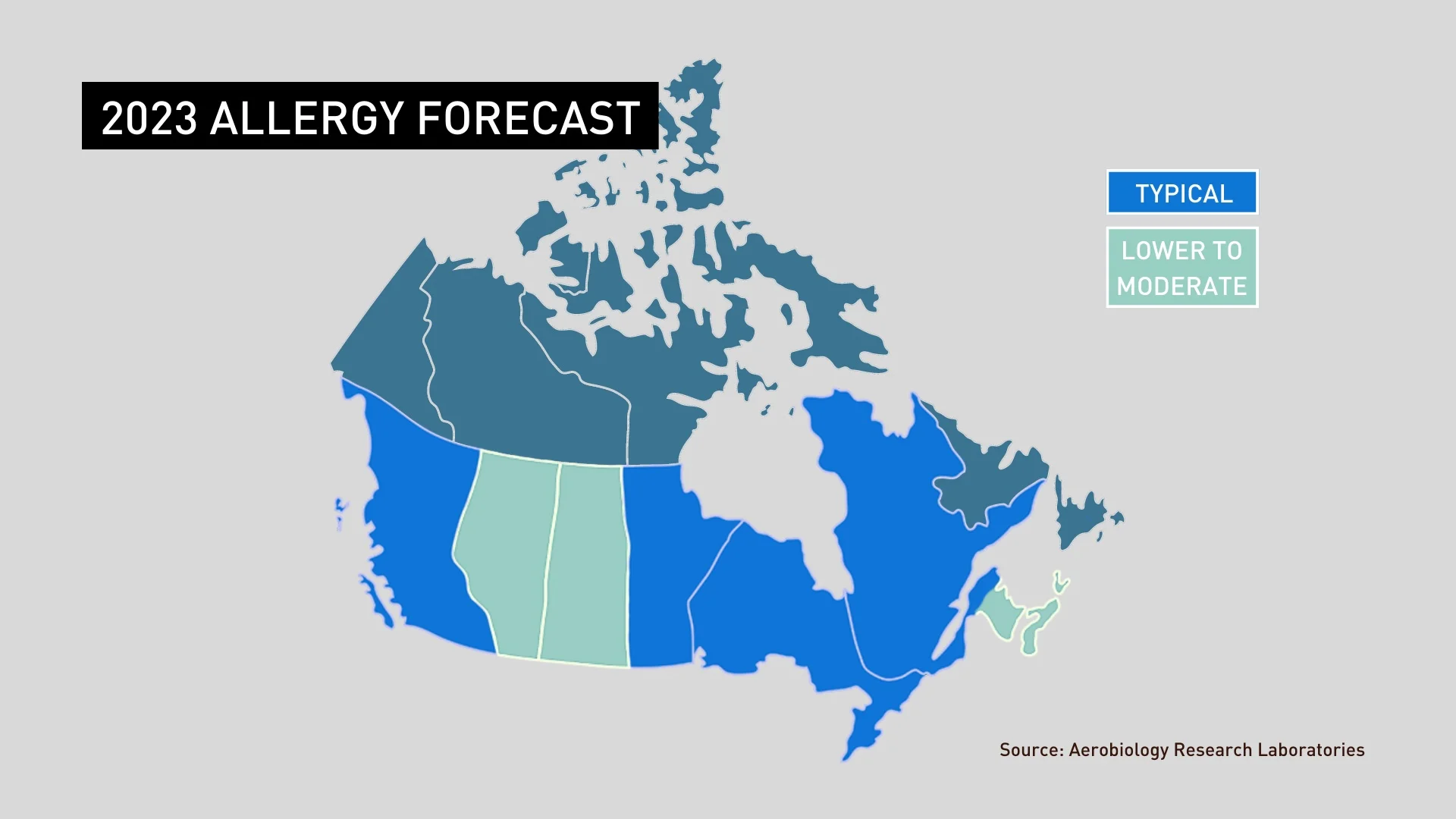
Concentrations of allergens and types this year
In terms of pollen, Coates said parts of the Prairies and the Maritimes can expect either lower levels or a more "moderate" range, whereas B.C., Manitoba, Ontario and Quebec can anticipate more of a typical season since the weather has been cold.
However...
"We might actually end up having higher concentrations of pollen in a shorter period of time rather than spreading out over a longer period of time," said Coates,

SEE ALSO: Signs your pet could be suffering from seasonal allergies
As for other allergens, provinces that can expect to see higher concentrations include B.C., mainly Vancouver and Victoria, since the cities have a milder climate and their season began in early February, he said. It has been a slow start for B.C., but it is now seeing a higher range for cedar and alder, whereas these allergens are just beginning to show up in the rest of Canada.
"The daylight hours and the warming of the environment really helps to dictate when the pollen will release," said Coates.
People who have allergies may have reactions outdoors from a variety of sources including cedar, maple, elm, alder, oak, birch, ragweed, grass, moulds, spores and nettles, among others.
The "top allergies" Canadians will experience this season depends a lot on the person, as well, Coates said. Some people are allergic to many pollen types at even low and moderate levels.
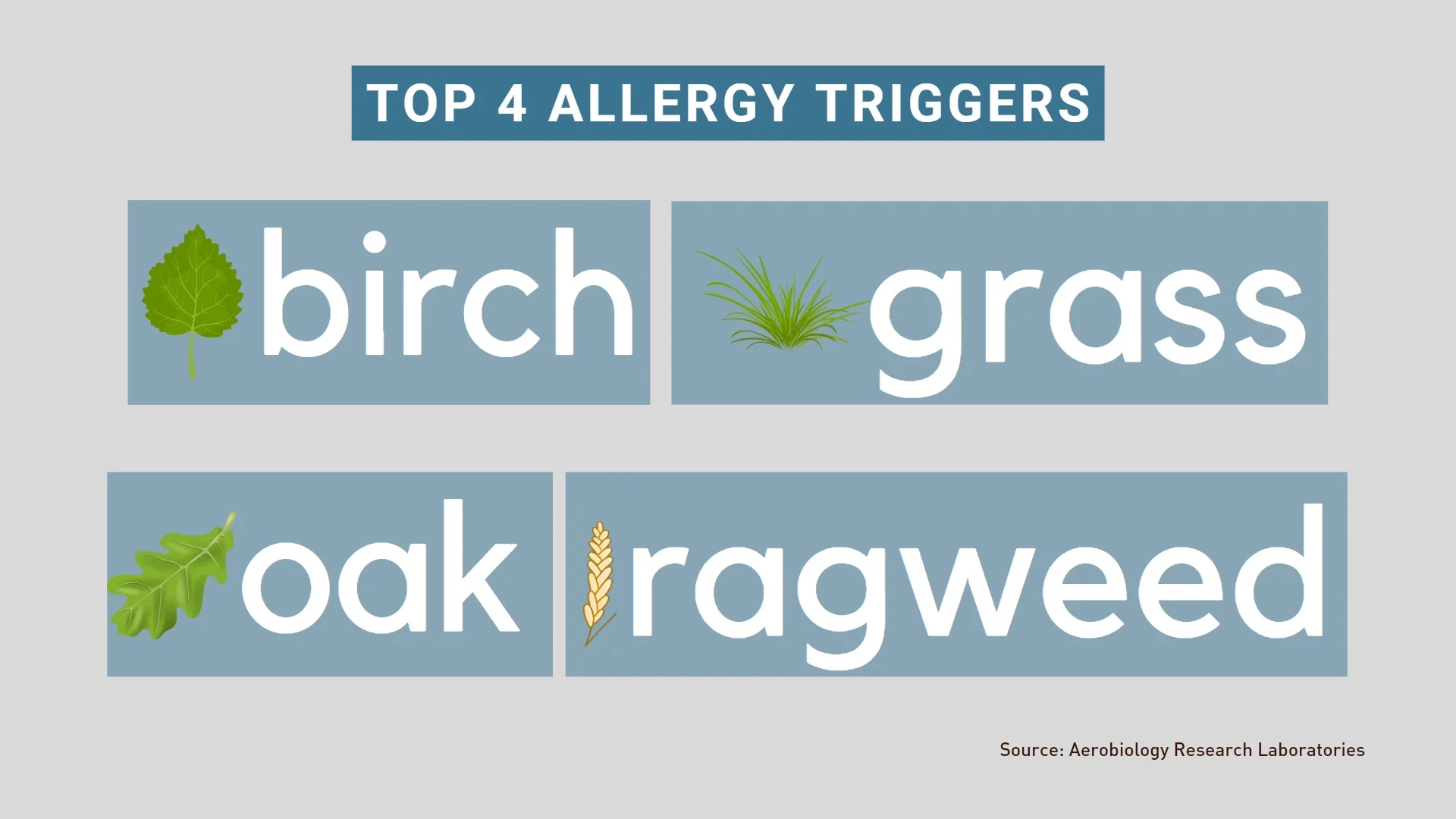
RELATED: 10 house plants that clear the air, improve your health
But, for the most part, people can expect to encounter "stereotypical" allergens this year, such as what we're seeing currently, including cedar and alder. This will be followed by birch, oak, elm, and grass and ragweed.
The latter is "some of the worst for Canadians who are very sensitive to pollen and allergies," Coates stated.
Coates also mentioned "silent" types of allergies that people often don't know about and/or suffer from: spores and outdoor moulds. "We usually see those in the spring and again in late fall, generally in late fall for the higher numbers, though."
He noted the pollen people will encounter in the air this year was produced in 2022. There are numerous variables for predicting when the pollen will be released, but what helps experts is the monitoring of daylight hours at the beginning of the season.
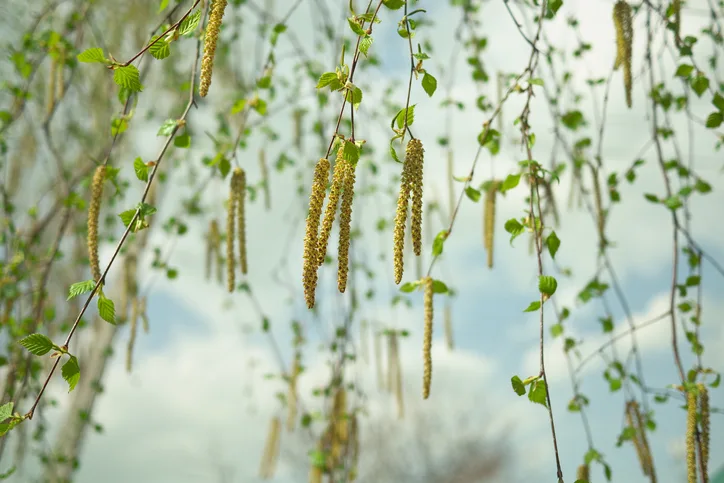
(Getty Images)
DON'T MISS: Get your allergies under control with these 7 products
For those wondering about the accuracy rates with the forecast, Coates and his colleagues have a success rate exceeding 80 per cent, he said, thanks to the amount of historical data at their disposal and the advantage of collecting every day during the pollen season.
"Based on the different variables, as well as how much daylight hours and heat we're experiencing, we can then predict when pollen is actually going to release," said Coates.
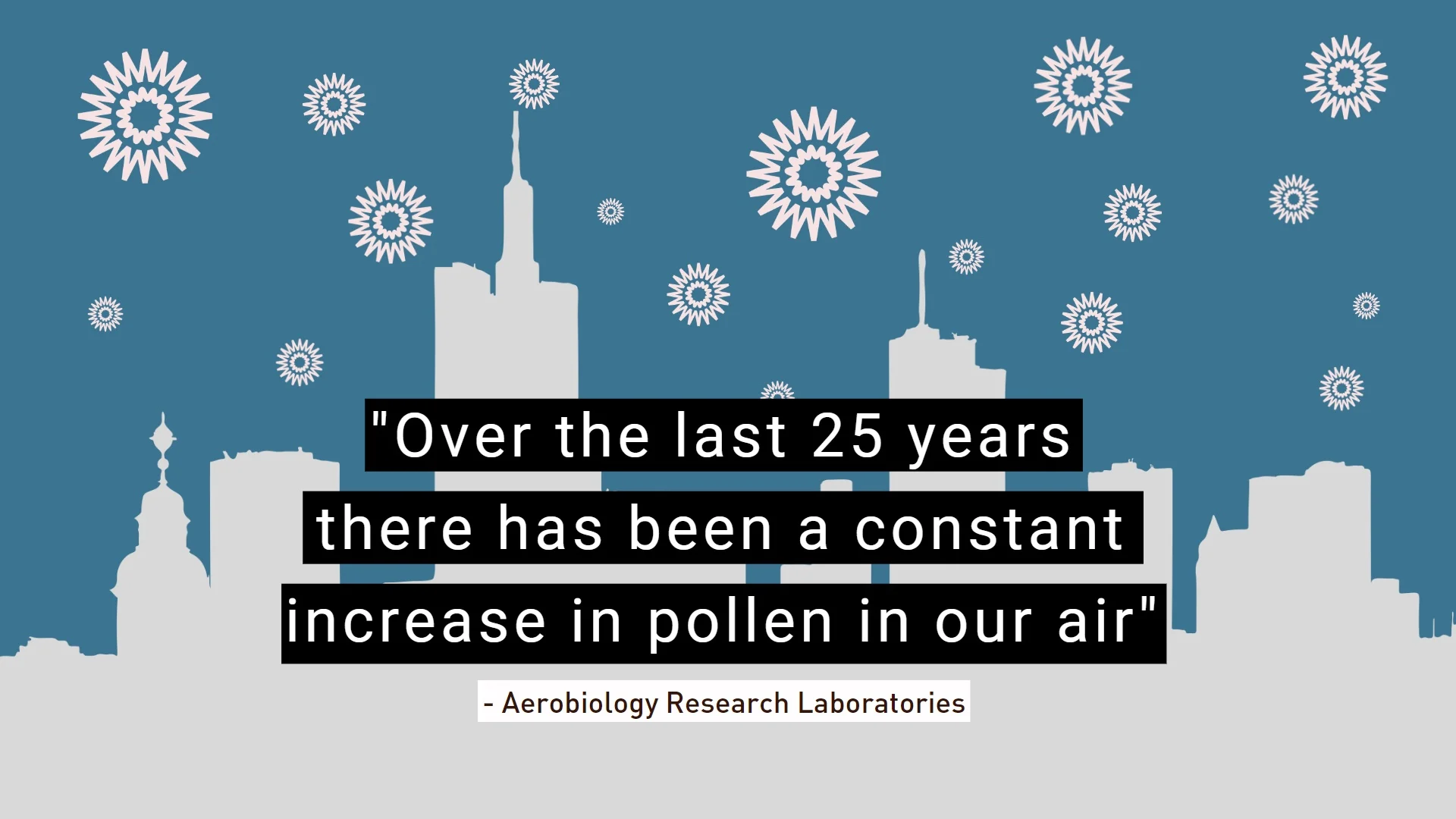
WATCH: Allergy fact or fiction? Busting myths about your allergies
Thumbnail courtesy of Getty Images.
With files from Rachel Schoutsen, weather presenter, sponsorship host and content creator at The Weather Network, and Cheryl Santa Maria, a digital journalist at The Weather Network.
Follow Nathan Howes on Twitter.










